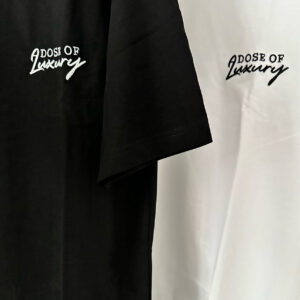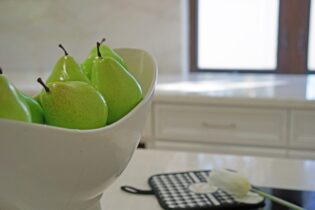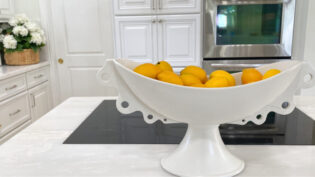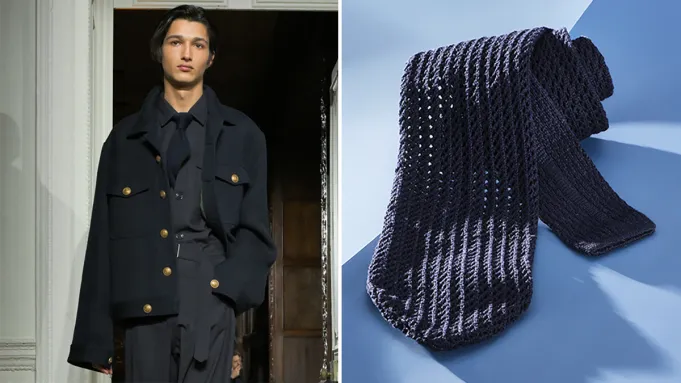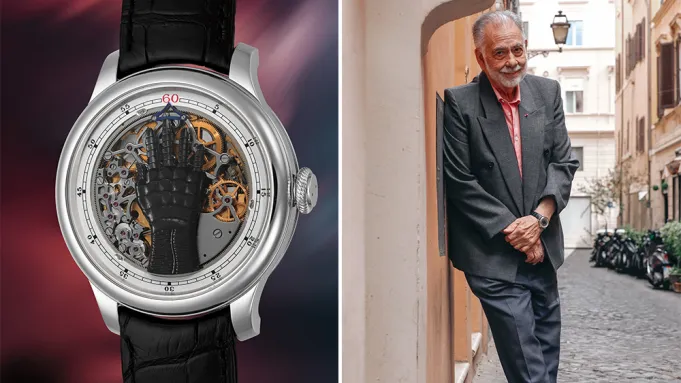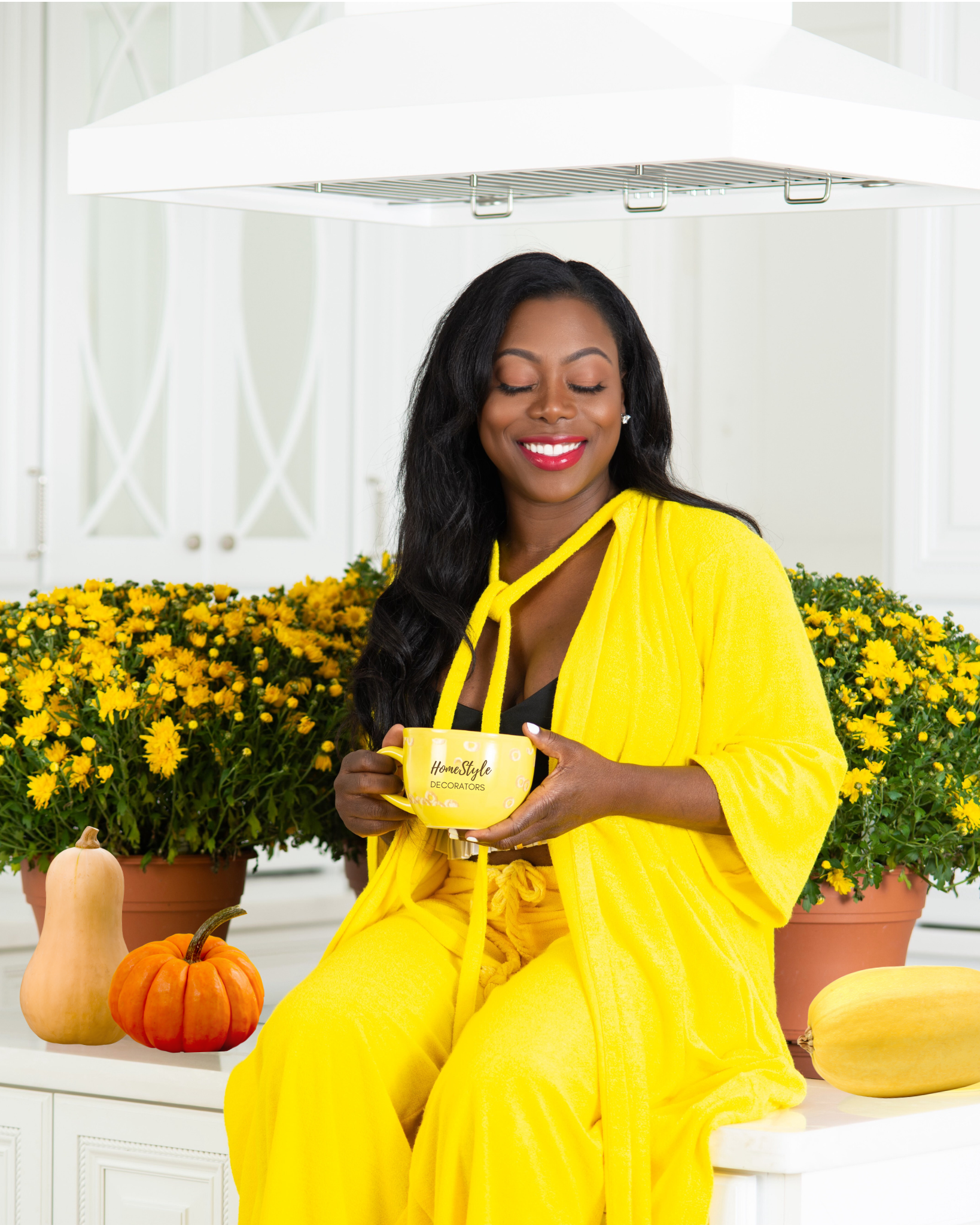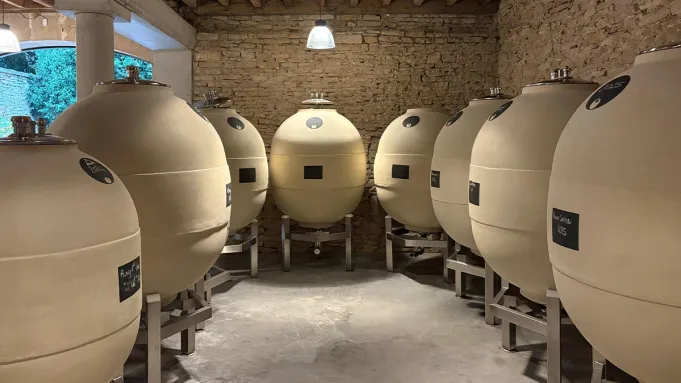
This story is from an installment of The Oeno Files, our weekly insider newsletter to the world of fine wine. Sign up here.
More than 2,000 years after the Romans made the switch from terracotta amphora to wooden barrels for shipping and storing wine, the Italians are once again at the forefront of wine technology. In an “everything old is new again” twist on using oak as a primary vessel for fermentation and aging, two different Italian companies, Clayver and Tava, are providing winemakers around the globe with ceramic barrels that, unlike oak barrels and unfinished earthenware amphora, provide a neutral environment for winemaking and maturation, allowing the grapes to speak for themselves. And the result is a style of wine more consumers are reaching for today.
“What sets them apart is their ability to support the wine without imposing themselves,” says Patricia Toth, winemaker at Planeta in Sicily. “They don’t mask the varietal or site expression but instead give a gentle structural backbone. The result is elegant, fruit-driven wines full of light and brightness.” So although the ceramic vessels are made in Italy, they’re not all staying there; just as the Romans brought wine and grapevines all over Europe, Clayver and Tava have clients around the winemaking world.
The main difference between ceramic and terra cotta is that ceramic barrels are kiln fired, offering a smooth, non-porous surface that minimizes interaction with the atmosphere as well as with the clay itself. The shift towards this type of winemaking is another example of consumers’ declining interest in over-oaked, highly tannic wines in favor of a lighter, fresher style. Charles Lachaux, sixth-generation winemaker and co-manager at Pinot Noir powerhouse Domaine Arnoux-Lachaux in Vosne-Romanée, uses Clayver for the 16 different wines made there, including one regional wine, six village appellation bottlings, five premier crus, and four grand crus. “From the 2019 vintage, I started to get bored with the oak taste, structure, and presence in the wines in general, even when it is subtle and integrated,” he says. In what he describes as his “quest for transparency” in his wine, he started using the vessels with the 2020 vintage and has transitioned his entire production over to them since.
Lachaux began with one of Clayver’s standard sizes, 400 liters, which is larger than the 200-liter barrel traditionally used in Burgundy. Today he also works with custom sizes that he requested: 520 and 650 liters. After fermentation in stainless steel tanks, he transfers his wine to the ceramic barrels, where it remains until bottling. “I wanted the most neutral material and tool crafted in the simplest way,” Lachaux explains. Over the past 10 years, the domain has made significant changes in its viticulture and winemaking practices “to increase and enhance the concentration and definition of the grapes” and to showcase “the balance and condition of each single vineyard in each single vintage.”

Wines made in ceramic barrels
In nearby Aloxe-Corton, Domaine Frey creates cuvées of wines aged in both Clayver and oak rather than using 100 percent ceramic. The Frey family first tried out ceramic for its Marsanne and Roussanne at La Chapelle Hermitage and Paul Jaboulet Aîné in the Rhône Valley and then extended its use to Burgundy. Estate manager Delphine Frey explains that the team at Domaine Frey does not allow its white wines to undergo malolactic fermentation so that they maintain “tension and freshness” that would be lost in a creamier style of Chardonnay. The proportion of ceramic and oak varies from wine to wine; while Domaine Frey Corton Blanc and Corton Charlemagne are aged in 50 percent Clayver, Corton Charlemagne Les Renardes Grand Cru uses only 25 percent ceramic. “Oak contributes aromatic complexity while respecting the original fruit character, whereas Clayver adds purity, tension, and minerality,” Frey says. “Blending Clayver and oak allows us to strike the right balance for our cuvées.” Toth also uses Clayver as part of a blend, both for Planeta’s Mount Etna Pinot Noir and for the international varieties vinified at the main winery in Menfi, such as Didacus Cabernet Franc, in which she blends in about 20 percent wine aged in ceramic “to add clarity and vibrancy.”
There are practical benefits too; ceramic barrels are easy to clean, and they have a good thermal profile. “They provide great stability, allowing both fermentation and aging in one vessel,” Toth says. Referring to his wines as feeling more defined, layered, and crunchy than they would be had they been aged in oak, Lachaux says, “It feels very accomplished and raw at the same time which is unusual but satisfying.”
Fernando Mora MW, cofounder of Cuevas de Arom in Calatayud, Spain, uses 250-liter Clayver spheres for his Tuca Negra Garnacha. Comparing ceramic to steel, he says, “Clayver avoids an overly reductive profile, giving a rounder, silkier texture and a more harmonious evolution,” while he points out that as opposed to oak, it “avoids any flavor or tannin pickup from the wood, resulting in a wine that is more precise, floral, and mineral, with a very fine and elegant expression of Garnacha.” Cuevas de Arom uses the vessels through the entire winemaking process, from fermentation through aging, which Mora explains provides a slower, more delicate evolution. “This helps us preserve freshness, stabilize color naturally, and achieve a tighter, more refined texture while keeping the wine’s aromatic profile pure.”
Having made all his wines in ceramic for the past several vintages, Lachaux says, “In oak the wines will be rounder and more accessible, but they will have a little makeup on them.” Coincidentally, Mora uses the same term. “The combination of high-altitude vineyards and Clayver’s gentle breathing allows us to craft a wine that is both tight and beautiful, a pure translation of place, with no makeup” he says. As wine lovers clamor for well-made wines that exhibit a sense of youth and freshness, innovations such as ceramic vessels will continue to make their presence felt in bottles and glasses around the globe.
Do you want access to rare and outstanding reds from Napa Valley? Join the Robb Report 672 Wine Club today.
Authors
-
Mike DeSimone and Jeff Jenssen
Mike DeSimone and Jeff Jenssen, also known as the World Wine Guys, are wine, spirits, food, and travel writers, educators, and hosts. They have been featured guests on the Today Show, The Martha…
instagram:
Error: No feed with the ID 1 found.
Please go to the Instagram Feed settings page to create a feed.


